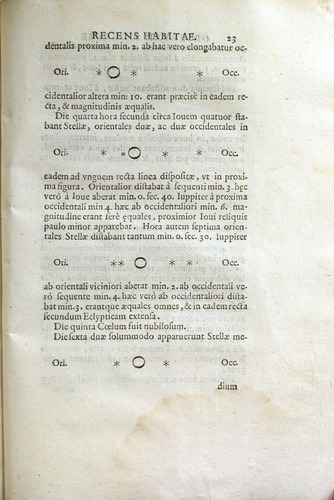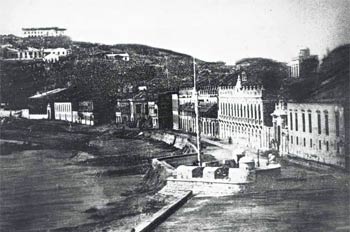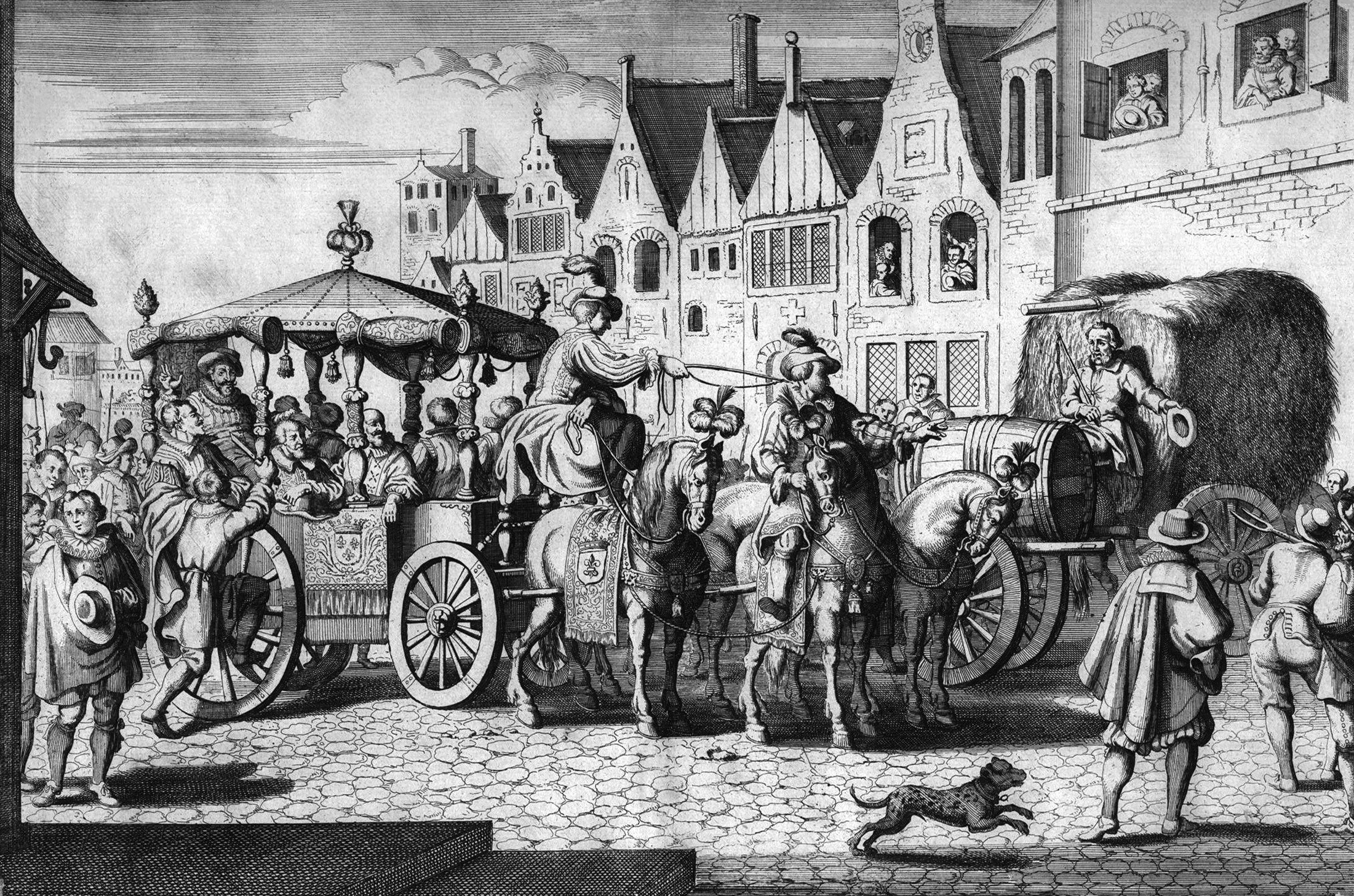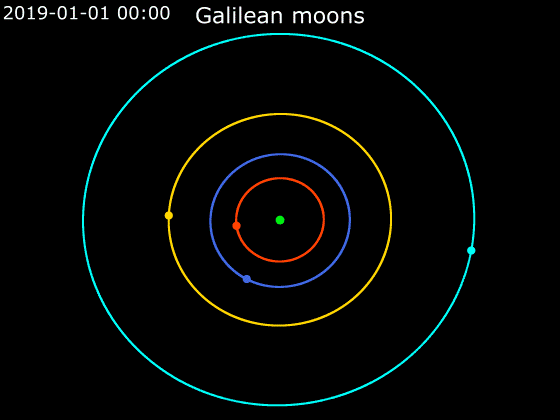|
1610
Some have suggested that 1610 may mark the beginning of the Anthropocene, or the 'Age of Man', marking a fundamental change in the relationship between humans and the Earth system, but earlier starting dates (ca. 1000 C.E.) have received broader consensus, based on high resolution pollution records that show the massive impact of human activity on the atmosphere. Events January–June * January 6 – ''Nossa Senhora da Graça'' incident: A Portuguese carrack sinks near Nagasaki, after fighting Japanese samurai for four nights. * January 7 – Galileo Galilei first observes the four Galilean moons of Jupiter: Ganymede, Callisto, Europa and Io, but is unable to distinguish the latter two until the following day. * February 24 – English courtier Thomas Roe sets out on an expedition to The Guianas and Amazon River. * May 14 – François Ravaillac assassinates Henry IV of France who is succeeded by his 8-year-old son Louis XIII. * May 23 &nd ... [...More Info...] [...Related Items...] OR: [Wikipedia] [Google] [Baidu] |
Henry IV Of France
Henry IV (french: Henri IV; 13 December 1553 – 14 May 1610), also known by the epithets Good King Henry or Henry the Great, was King of Navarre (as Henry III) from 1572 and King of France from 1589 to 1610. He was the first monarch of France from the House of Bourbon, a cadet branch of the Capetian dynasty. He was assassinated in 1610 by François Ravaillac, a Catholic zealot, and was succeeded by his son Louis XIII. Henry was the son of Jeanne III of Navarre and Antoine of Navarre, Antoine de Bourbon, Duke of Vendôme. He was baptised as a Catholic but raised in the Protestant faith by his mother. He inherited the throne of Navarre in 1572 on his mother's death. As a Huguenot, Henry was involved in the French Wars of Religion, barely escaping assassination in the St. Bartholomew's Day massacre. He later led Protestant forces against the French royal army. Henry became king of France in 1589 upon the death of Henry III of France, Henry III, his brother-in-law and ... [...More Info...] [...Related Items...] OR: [Wikipedia] [Google] [Baidu] |
Thomas Gates (governor)
Sir Thomas Gates (fl.?–1622), was the governor of Jamestown, in the English colony of Virginia (now the Commonwealth of Virginia, part of the United States of America). His predecessor, George Percy, through inept leadership, was responsible for the lives lost during the period called the Starving Time. The English-born Gates arrived to find a few surviving starving colonists commanded by Percy, and assumed command. Gates ruled with deputy governor Sir Thomas Dale. Their controlled, strict methods helped the early colonies survive. Sir Thomas was knighted in 1596 by Robert Devereux, 2nd Earl of Essex for gallantry at the Capture of Cadiz. His knighthood was later royally confirmed by Queen Elizabeth I. Third Supply and Bermuda Gates was appointed by the Virginia Company of London, which had established the Jamestown settlement under a Royal Charter for the colonisation of Virginia. He had sailed for Jamestown in 1609, aboard the '' Sea Venture'', the new flagship of t ... [...More Info...] [...Related Items...] OR: [Wikipedia] [Google] [Baidu] |
Louis XIII
Louis XIII (; sometimes called the Just; 27 September 1601 – 14 May 1643) was King of France from 1610 until his death in 1643 and King of Navarre (as Louis II) from 1610 to 1620, when the crown of Navarre was merged with the French crown. Shortly before his ninth birthday, Louis became king of France and Navarre after his father Henry IV was assassinated. His mother, Marie de' Medici, acted as regent during his minority. Mismanagement of the kingdom and ceaseless political intrigues by Marie and her Italian favourites led the young king to take power in 1617 by exiling his mother and executing her followers, including Concino Concini, the most influential Italian at the French court. Louis XIII, taciturn and suspicious, relied heavily on his chief ministers, first Charles d'Albert, duc de Luynes and then Cardinal Richelieu, to govern the Kingdom of France. The King and the Cardinal are remembered for establishing the '' Académie française'', and ending the revolt o ... [...More Info...] [...Related Items...] OR: [Wikipedia] [Google] [Baidu] |
Galilean Moons
The Galilean moons (), or Galilean satellites, are the four largest moons of Jupiter: Io, Europa, Ganymede, and Callisto. They were first seen by Galileo Galilei in December 1609 or January 1610, and recognized by him as satellites of Jupiter in March 1610. They were the first objects found to orbit a planet other than the Earth. They are among the largest objects in the Solar System with the exception of the Sun and the eight planets, with a radius larger than any of the dwarf planets. Ganymede is the largest moon in the Solar System, and is even bigger than the planet Mercury, though only around half as massive. The three inner moons— Io, Europa, and Ganymede—are in a 4:2:1 orbital resonance with each other. While the Galilean moons are spherical, all of Jupiter's much smaller remaining moons have irregular forms because of their weaker self-gravitation. The Galilean moons were observed in either 1609 or 1610 when Galileo made improvements to his telescope, which ... [...More Info...] [...Related Items...] OR: [Wikipedia] [Google] [Baidu] |
Galileo Galilei
Galileo di Vincenzo Bonaiuti de' Galilei (15 February 1564 – 8 January 1642) was an Italian astronomer, physicist and engineer, sometimes described as a polymath. Commonly referred to as Galileo, his name was pronounced (, ). He was born in the city of Pisa, then part of the Duchy of Florence. Galileo has been called the "father" of observational astronomy, modern physics, the scientific method, and modern science. Galileo studied speed and velocity, gravity and free fall, the principle of relativity, inertia, projectile motion and also worked in applied science and technology, describing the properties of pendulums and " hydrostatic balances". He invented the thermoscope and various military compasses, and used the telescope for scientific observations of celestial objects. His contributions to observational astronomy include telescopic confirmation of the phases of Venus, observation of the four largest satellites of Jupiter, observation of Saturn's rin ... [...More Info...] [...Related Items...] OR: [Wikipedia] [Google] [Baidu] |
Nossa Senhora Da Graça Incident
The , alternatively called the , was a four-day naval battle between a Portuguese carrack and Japanese samurai junks belonging to the Arima clan_near_the_waters_of_Nagasaki.html" ;"title="DF 6-7 of 80/nowiki>">DF ... near the waters of Nagasaki">DF 6-7 of 80/nowiki>">DF ... near the waters of Nagasaki in 1610. The richly laden "great ship of commerce", famed as the "black ship" by the Japanese, sank after its captain André Pessoa set the gunpowder storage on fire as the vessel was overrun by samurai. This desperate and fatal resistance impressed the Japanese at the time, and memories of the event persisted even into the 19th century. Background In 1543 Portuguese traders arrived in Japan initiating its first contacts with the West. Soon they established a trade post in Nagasaki, linking it with their headquarters in Goa via Malacca. Large carracks engaged in the flourishing "Nanban trade", introducing new goods and ideas into Japan, the most important of them being arquebuse ... [...More Info...] [...Related Items...] OR: [Wikipedia] [Google] [Baidu] |
François Ravaillac
François Ravaillac (; 1578 – 27 May 1610) was a French Catholic zealot who assassinated King Henry IV of France in 1610. Biography Early life and education Ravaillac was born in 1578 at Angoulême of an educated family: his grandfather François Ravaillac, was prosecutor of Angoulême, and two of his uncles were canons of the Cathedral of Angouleme. His father Jean Ravaillac was a violent man whose many misdeeds were a public scandal and caused legal difficulties; his mother Françoise Dubreuil (sister of the canons) was known for her Catholic piety. The son Ravaillac began work as a servant, later becoming a school teacher. Obsessed by religion, he sought admission to the ascetic '' Feuillants'' order, but after a short probation, he was dismissed as being "prey to visions." An application in 1606 for admission to the Society of Jesus was also unsuccessful. Regicide In 1609, Ravaillac claimed to have experienced a vision instructing him to convince King Henry IV to c ... [...More Info...] [...Related Items...] OR: [Wikipedia] [Google] [Baidu] |
Jamestown, Virginia
The Jamestown settlement in the Colony of Virginia was the first permanent English settlement in the Americas. It was located on the northeast bank of the James (Powhatan) River about southwest of the center of modern Williamsburg. It was established by the Virginia Company of London as "James Fort" on May 4, 1607 O.S. (May 14, 1607 N.S.), and was considered permanent after a brief abandonment in 1610. It followed several failed attempts, including the Lost Colony of Roanoke, established in 1585 on Roanoke Island, later part of North Carolina. Jamestown served as the colonial capital from 1616 until 1699. Despite the dispatch of more settlers and supplies, including the 1608 arrival of eight Polish and German colonistsJamestowne Rediscovery: A Timeline of Events and References . R ... [...More Info...] [...Related Items...] OR: [Wikipedia] [Google] [Baidu] |
Io (moon)
Io (), or Jupiter I, is the innermost and third-largest of the four Galilean moons of the planet Jupiter. Slightly larger than Earth’s moon, Io is the fourth-largest moon in the Solar System, has the highest density of any moon, the strongest surface gravity of any moon, and the lowest amount of water (by atomic ratio) of any known astronomical object in the Solar System. It was discovered in 1610 by Galileo Galilei and was named after the mythological character Io, a priestess of Hera who became one of Zeus's lovers. With over 400 active volcanoes, Io is the most geologically active object in the Solar System. This extreme geologic activity is the result of tidal heating from friction generated within Io's interior as it is pulled between Jupiter and the other Galilean moons—Europa, Ganymede and Callisto. Several volcanoes produce plumes of sulfur and sulfur dioxide that climb as high as above the surface. Io's surface is also dotted with more than 100 mountains t ... [...More Info...] [...Related Items...] OR: [Wikipedia] [Google] [Baidu] |
Europa (moon)
Europa , or Jupiter II, is the smallest of the four Galilean moons orbiting Jupiter, and the sixth-closest to the planet of all the 80 known moons of Jupiter. It is also the sixth-largest moon in the Solar System. Europa was discovered in 1610 by Galileo Galilei and was named after Europa, the Phoenician mother of King Minos of Crete and lover of Zeus (the Greek equivalent of the Roman god Jupiter). Slightly smaller than Earth's Moon, Europa is primarily made of silicate rock and has a water-ice crust and probably an iron–nickel core. It has a very thin atmosphere, composed primarily of oxygen. Its white- beige surface is striated by light tan cracks and streaks, but craters are relatively few. In addition to Earth-bound telescope observations, Europa has been examined by a succession of space-probe flybys, the first occurring in the early 1970s. In September 2022, the ''Juno'' spacecraft flew within about 200 miles of Europa for a more recent close-up view. Europa has ... [...More Info...] [...Related Items...] OR: [Wikipedia] [Google] [Baidu] |
Callisto (moon)
Callisto (), or Jupiter IV, is the second-largest moon of Jupiter, after Ganymede. It is the third-largest moon in the Solar System after Ganymede and Saturn's largest moon Titan, and the largest object in the Solar System that may not be properly differentiated. Callisto was discovered in 1610 by Galileo Galilei. With a diameter of , Callisto is about 99% the diameter of the planet Mercury, but only about a third of its mass. It is the fourth Galilean moon of Jupiter by distance, with an orbital radius of about . It is not in an orbital resonance like the three other Galilean satellites— Io, Europa, and Ganymede—and is thus not appreciably tidally heated. Callisto's rotation is tidally locked to its orbit around Jupiter, so that the same hemisphere always faces inward. Because of this, there is a sub-Jovian point on Callisto's surface, from which Jupiter would appear to hang directly overhead. It is less affected by Jupiter's magnetosphere than the other inner sate ... [...More Info...] [...Related Items...] OR: [Wikipedia] [Google] [Baidu] |
Ganymede (moon)
Ganymede, a satellite of Jupiter (Jupiter III), is the largest and most massive of the Solar System's moons. The ninth-largest object (including the Sun) of the Solar System, it is the largest without a substantial atmosphere (albeit not the most massive one, which is Mercury). It has a diameter of , making it 26 percent larger than the planet Mercury by volume, although it is only 45 percent as massive. Possessing a metallic core, it has the lowest moment of inertia factor of any solid body in the Solar System and is the only moon known to have a magnetic field. Outward from Jupiter, it is the seventh satellite and the third of the Galilean moons, the first group of objects discovered orbiting another planet. Ganymede orbits Jupiter in roughly seven days and is in a 1:2:4 orbital resonance with the moons Europa and Io, respectively. Ganymede is composed of approximately equal amounts of silicate rock and water. It is a fully differentiated body with an iron-rich, li ... [...More Info...] [...Related Items...] OR: [Wikipedia] [Google] [Baidu] |






.png)



